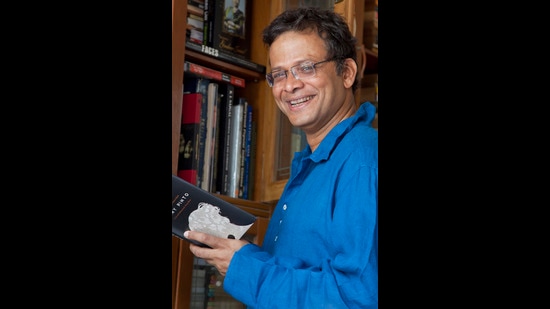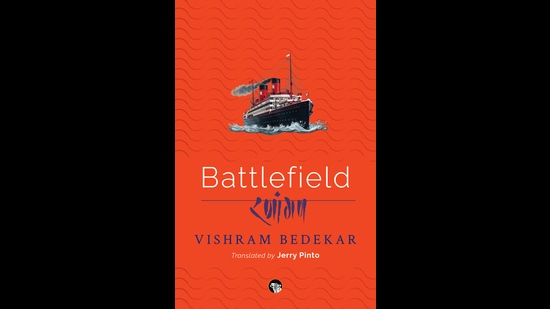
HOW DO YOU LIVE?
By Genzaburo Yoshino
Translated by Bruno Navasky
Foreword by Neil Gaiman
All classic children’s books are works of philosophy in one sense or another. A grown-up novel may make all its points with action and emotion, but some underlying force of fable or allegory, of educational purpose, seems necessary to illuminate a permanent book for younger readers. “Mary Poppins” and “Charlotte’s Web,” in addition to the stories they tell, have not merely a moral to impart but a view of life to offer — in “Mary,” that the strictest and most severe people often have the most passionate connection to life’s mysteries; in “Charlotte,” a still deeper one, that death is as much a starting point as it is an end.
But few classics for young readers are as entirely philosophical and contemplative, as engineered to instruct, as Genzaburo Yoshino’s “How Do You Live?” Apparently nearly compulsory reading in Japan — one Japanese reader assures me that every summer list for 13-year-olds includes it — it has sold more than two million copies there since its original publication in 1937 (the same year in which the novel is set), but it is only now appearing for the first time in an English translation. (The ostensible reason for the new edition is that the book is to be the basis for a final film by the great animator Hayao Miyazaki.)
In his foreword, Neil Gaiman gently prepares readers — against expectations that his patronage might create, given his own vivid, kinetic style — for any disappointment they may feel with this book. Had he been given it to read as a boy, he admits, “I suspect I would have found it puzzling or even dull.” Indeed, where most classics aimed at the younger mind have some pleasurable lake of cool stuff on which to float the oil of philosophy, this one is nearly all philosophy — and a fairly dense and demanding kind, centered on what we would now call the philosophy of science, with excursions into modern economic theory, French military history and the dissemination of Hellenistic style in Indian sculpture. These mini-treatises, absorbing on their own terms and written in a tone of sweetly patient explanation, are not exactly what a mind shaped by horcruxes and lightning thieves expects to find thrilling.
Yet in another way, nothing is more engrossing than the story of an education shared, the true subject of this book. The premise, or pivot, that justifies the philosophizing is a series of exchanges between a young boy, appealingly named Copper, and his thoughtful uncle, who lives in the same Tokyo suburb to which Copper and his harried mother moved after his father died two years earlier. Copper goes to school in the center of the city, and one of the not-incidental pleasures of the book is its evocation of Tokyo in the 1930s, as in this view from the roof of a department store: “The trolleys looked as small as toys, and their roofs were slick with rain. The cars, too, and the asphalt road surface and even the trees lining the road and all else that was there were dripping wet and gleaming with the brightness of daylight shining from who knew where.”
Copper, we learn, has earned his nickname not from a metal or a color but from the Polish astronomer Nicolaus Copernicus, whose courage in insisting on the heliocentric model of the solar system has become the boy’s benchmark. (It isn’t clear if “Copper” has the punning presence in Japanese that it does in English.) This lesson is one supplied by his uncle, whose letters of instruction on many subjects take up at least a third of the book, and act as a kind of counterpoint to the more mundane though neatly described escapades of Copper at his school. As he reports back to his uncle on these hyper-normal events — friendships made, teachers defied, bullies avoided — his uncle digs deep into an apparently bottomless bag of erudition and finds apropos examples for his nephew to consider as his adolescence unfolds. These include the difference between the interests of consumers and producers; molecular and atomic theory; the question of whether Napoleon Bonaparte’s heroism justified his sacrifice of French soldiers in Russia; and the dispute about the reality of Isaac Newton’s falling apple.
This all sounds … odd, not to say potentially tiresome. And it is odd, but tiresome it isn’t, chiefly because Yoshino has given the instruction a touching emotional root. On his deathbed, we learn, Copper’s father asked his wife’s younger brother to make sure his son became “a great man,” with a definition of greatness that was humble and startling: He wanted his son to be “a fine example of a human being.” And so his uncle’s philosophizing, far from being random, is designed to instruct the boy in the values of life. When Copper contemplates molecular theory, he is learning to see himself as an interchangeable part of a larger stream of life, to dislocate his own egotism, but the lessons in global economics that come soon after also teach that each molecule depends on all the others. We are nothing; we are everything.
One is put in mind, at times, of Antoine de Saint-Exupéry, writing “The Little Prince,” and also, in a desperate time of war, using children’s literature to instruct readers in the necessity of pluralism and a dislocated love of others. Much of the content of “How Do You Live?,” a Western reader suspects, is in a similar way cagily related to the politics, and indeed the desperation, of a left-wing humanist responding to the tragic rise of militarized imperialism in Japan in the years immediately before World War II. (Yoshino was long a professor at Meiji University, and was imprisoned before the war as a leftist. The economic passages here bear the imprint of his Marxism, helpfully hybridized with Buddhist temperance and a love of Western science.)
Two things are apparent in Yoshino’s tale: how complete the “Westernization” of Japan was by 1937 and how complete it wasn’t. The comic highlight of the book involves a gaily improvised baseball “broadcast” by Copper; but the extreme deference and courtesy that informs Copper’s exchanges with his uncle feels very removed from the world of Babe Ruth and Ring Lardner. Everyone in 1930s Japan, it seems, a little shockingly, is expected to know about Napoleon, but what they know is his dignity in defeat.
The book concludes with a beautifully realized double climax that’s a remarkable twinning of its micro and macro worlds. In the schoolyard, Copper fails to come to the rescue of a friend who is being bullied by brutal older boys. Guilt-ridden, he is urged by his uncle to write a letter of apology, with no expectations of reward. The tone of the letter seems, to this reader, overly filled with shame, but it works to anneal the injury. Soon after, the uncle offers a disquisition on, of all seemingly abstruse subjects, the development of Greco-Buddhist art — the “Gandhara” style — which even this not-entirely-art-ignorant reader knew little about. (It is worth Googling for a peek at the extraordinary work, in which Hercules stands beside the Buddha.) Copper’s uncle untangles the mystery of the style’s creation, showing how Greek artists brought east by Alexander the Great took up Buddhist subjects, which turned the physical affirmations of their own work more mystically inward. “And so, Copper,” his uncle says, “the Buddhist art we know doesn’t arise from Buddhist ideas alone. Nor was it produced using Greek sculptural techniques alone. It’s something that was created by joining the two things together.”
What begins as a seemingly abstract art-historical lecture becomes a moving, appropriately climactic plea — never more relevant than today — for hybrid humanism, for an understanding of the mixed and heterogenous nature of all human culture. Here again, one suspects that, in its time and place, this was not merely as moving as it remains, but also unusually courageous and dissident.
At the very end of the book, the omniscient narrator suddenly turns to the reader and asks, in a final single-sentence paragraph, “How will you live?” (The italics are mine, but the emphasis is implicit.) A hard book to assess via the blunt thumbs-up or thumbs-down rating system on which we’ve lazily come to depend, “How Do You Live?” is nonetheless not easily forgotten. Many American 13-year-olds will doubtless find it “dull,” as Gaiman worries, with too little narrative action — or action of any kind really. But some may feel, as this reader did upon closing it, inclined to affirm an unusual truth: “I am wiser for having read this book.”





